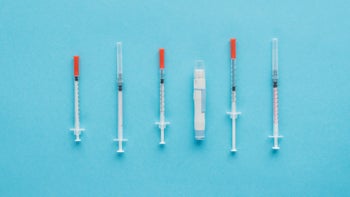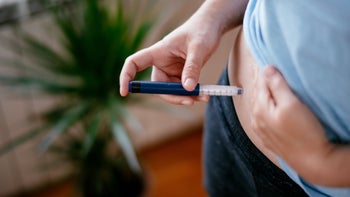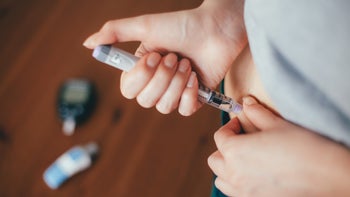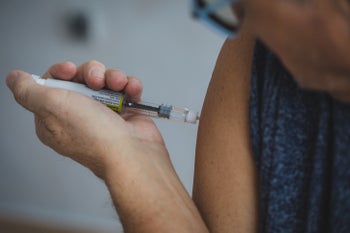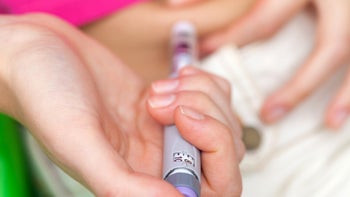
The 6 Types of Insulin: A Guide to Regular, Short, and Long-Acting Insulins
Key takeaways:
Insulin helps the body regulate the energy (glucose) it receives. It moves glucose from the blood into the body’s cells where it is used as fuel. After the body uses what it needs, the rest gets stored in the liver, muscles, and fat cells.
When the body isn’t making enough insulin, or is having a problem using it correctly, blood glucose levels become high. This condition is known as diabetes.
There are different types of insulin to help keep blood glucose within target range. You can take insulin as an inhaler, through a syringe, insulin pen, or insulin pump.
While only a small percent of people with type 2 diabetes use insulin, all people with type 1 diabetes must take it for life.
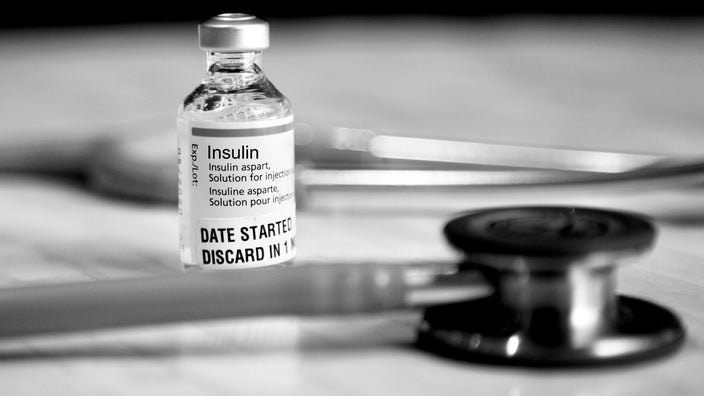
A diabetes diagnosis can feel overwhelming, especially when you have to manage it with insulin.Because there are so many different types of insulin, things can get confusing. Here, we’ll walk you through the basics.
What is insulin used for?
Insulin is a hormone that helps with energy regulation. After a meal, the pancreas releases insulin into the blood. Insulin’s main job is to get glucose out of the blood and into cells. The body’s cells need glucose for fuel. Insulin’s actions also help to keep glucose levels in the blood from getting too high.
Who uses insulin?
When people do not make insulin, or their bodies do not respond to insulin the way they should, that’s called diabetes. In these cases, insulin medication can help to manage blood glucose levels.
While insulin is the standard treatment for type 1 diabetes (T1D), it’s used less commonly for type 2 diabetes (T1D). Here’s why.
With T1D, the pancreas makes little to no insulin, so people with T1D need to take extra insulin to help keep blood glucose within target range.
Save every month on GLP-1 meds with GoodRx
Save an average of $235 on FDA-approved GLP-1s like Ozempic and Zepbound.

With T2D, the body makes insulin, but it may not be making enough, or it doesn’t get used effectively by the body. This is also called insulin resistance. Some people with T2D may need insulin, but that isn’t always the case. Often, oral medications will do the trick.
What are the six different types of insulin?
The type of insulin that is best for you depends on your lifestyle, type of diabetes, and how much your blood glucose changes throughout the day. Currently, there are five types of injectable insulins and one inhaled insulin.
| How long it takes to start working | How long it lasts | Examples | |
|---|---|---|---|
| Rapid-acting insulin | 15 minutes | 2 to 4 hours | Insulin aspart (Novolog) Insulin lispro (Humalog) Insulin glulisine (Apidra) |
| Regular insulin | 30 minutes | 3 to 6 hours | Insulin regular (Novolin R) |
| Intermediate-acting insulin | 1 to 2 hours | 12 hours | NPH (Novolin N) |
| Long-acting insulin | 2 to 4 hours | 24 hours | Insulin detemir (Levemir) Insulin glargine (Lantus, Basaglar) |
| Ultra-long-acting insulin | 6 hours | 36 to 42 hours | Insulin degludec (Tresiba) Insulin glargine U300 (Toujeo) |
| Inhaled insulin | 12-15 minutes | 3 hours | Inhaled insulin (Afrezza) |
Rapid-acting insulin
Rapid-acting insulin (Novolog, Humalog, Apidra), also known as fast-acting insulin, begins to work soon after you inject it and stops working 2 to 4 hours later. Rapid-acting insulin is injected before a meal to prevent your blood glucose from rising, and to correct high blood sugars. It can be used with a longer-acting insulin.
Regular insulin or short-acting insulin
Regular insulin (Novolin R) is also known as short-acting insulin. It is also used to cover your insulin needs at mealtime, but it can be injected a little bit longer before the meal than rapid-acting insulin. It also works in the body slightly longer than fast-acting insulin. It may be used with a longer-acting insulin.
Intermediate-acting insulin
Intermediate-acting insulin (Novolin N) is used less often than other types of insulin, but it’s possible that your healthcare provider may recommend it for you. This type of insulin works for about half the day, which can make it useful for overnight insulin coverage.
Long-acting insulin
Long-acting insulin (Levemir, Lantus, Basaglar) covers all-day insulin needs. The idea is that you only have to inject it once, and it will help keep your blood sugar controlled over a 24-hour period. You may inject long-acting insulin first thing in the morning or before bed to control your blood sugar levels all day. You may or may not use a rapid-acting or regular insulin along with it, depending on the type of diabetes you have, and what your provider orders.
Ultra-long-acting insulin
The main difference between long-acting insulin and ultra-long-acting insulin (Tresiba, Toujeo) is that ultra-long-acting insulin has no peak. This means there is no point in time where there is a maximum effect of insulin in your body, which reduces your risk of having low blood glucose (hypoglycemia).
Read more like this
Explore these related articles, suggested for readers like you.
Inhaled insulin
Inhaled insulin (Afrezza) is rapid-acting and starts working within 12-15 minutes of being inhaled. It leaves your body within 3 hours and peaks within 30 minutes of being inhaled. This type of insulin can’t be used in place of long-acting insulin but should be combined with it.
What type of insulin is best for my diabetes?
Some people with diabetes may only need one type of insulin, while others may need multiple types to manage their blood glucose. Your healthcare provider will help to recommend one of the following insulin regimens that’s right for you.
Once-daily or twice-daily insulin
With T2D, sometimes oral medications aren’t enough. If this is the case, your provider may supplement with once- or twice-daily dosing with intermediate- or long-acting insulin types. This will help to keep your blood glucose within target range.
Basal-bolus regimen
Injected insulin replaces what the body normally makes. Basal insulin (long-acting or ultra-long-acting) helps to manage blood glucose between meals. While bolus (rapid- or short-acting) insulin helps to manage blood glucose at meals. With a basal-bolus regimen, you may have four or more injections per day. This method may be recommended for people with T1D and T2D.
Sliding scale insulin
People with diabetes can have two ratios at meals to help them stay within target range. One is an insulin to carbohydrate ratio, the other is a sliding scale (or correction factor).
Because blood glucose varies before meals, a correction factor is a good solution. This means that the amount of insulin given varies with the blood glucose value. If carbohydrate amounts at meals aren’t set, a carbohydrate ratio is used. This means that insulin is adjusted to match carbohydrates.
Insulin pump therapy
An insulin pump is a small, wearable device that gives a continuous (basal) dose of rapid-acting insulin. When prompted, it will deliver a bolus dose of insulin for meals or to correct high glucose levels. For people with T1D, and for some with T2D, insulin pump therapy can be a convenient option.
New automated insulin delivery (AID) systems can sense changes in glucose and adjust insulin in response. The system is made up of a continuous glucose monitor (CGM) and an insulin pump. AIDs can help to lighten the burden of T1D by improving time in range (set blood glucose level targets) while decreasing disease burnout, diabetes distress, and other health issues.
How Do You Take Insulin?
There are a variety of ways that insulin may be prescribed to take. It can be inhaled or delivered with a syringe, insulin pen, or insulin pump. The steps you take to deliver insulin will vary depending upon the tools and medications that you’re using.
That being said, there are some common steps to take when injecting insulin:
Store insulin at recommended temperature
Clean hands
Double check the insulin and dose
Use alcohol wipes to clean the skin before injecting
Rotate injection sites
Use new syringes or pen needles each time
Dispose of needles safely
Learning how to inject or inhale insulin properly is a vital part of managing your diabetes. You will learn these skills from your diabetes care team and can read more from the Association of Diabetes Care and Education Specialists (ADCES).
Signs of high and low blood sugar
It’s normal for people living with diabetes to have fluctuations in their blood glucose levels. If you have symptoms of low blood sugar (hypoglycemia) or high blood sugar (hyperglycemia), test your blood glucose and follow instructions given by your care team.
Symptoms of hypoglycemia include:
Hunger
Fast heartbeat
Shakiness
Anxiety
Sweating
Confusion
Difficulty concentrating
Symptoms of hyperglycemia include:
Increased thirst and urination
Blurry vision
Tiredness
Stomach ache, nausea, or vomiting
Sweet smelling or fruity breath
Shortness of breath
The bottom line
When the body isn’t making enough insulin, or is having a problem using it correctly, blood glucose levels become high resulting in diabetes. There are different types of insulin and delivery systems to help blood glucose stay within target range. While people with type 1 diabetes will be prescribed insulin, only some people with type 2 diabetes will need it. Understanding your diabetes management plan is an important part of staying healthy with diabetes.
Why trust our experts?


References
Association of Diabetes Care and Education Specialists (ADCES). (2020). Insulin injection know-how
Brown, S., et al. (2016). Six-month randomized, multicenter trial of closed-loop control in type 1 diabetes. The New England Journal of Medicine.
Centers for Disease Control and Prevention. (2021). Manage blood sugar.
Rankin, D., et al. (2021) Adolescents’ and their parents’ experiences of using a closed-loop system to manage type 1 diabetes in everyday life: Qualitative study. Sage Journals.

















